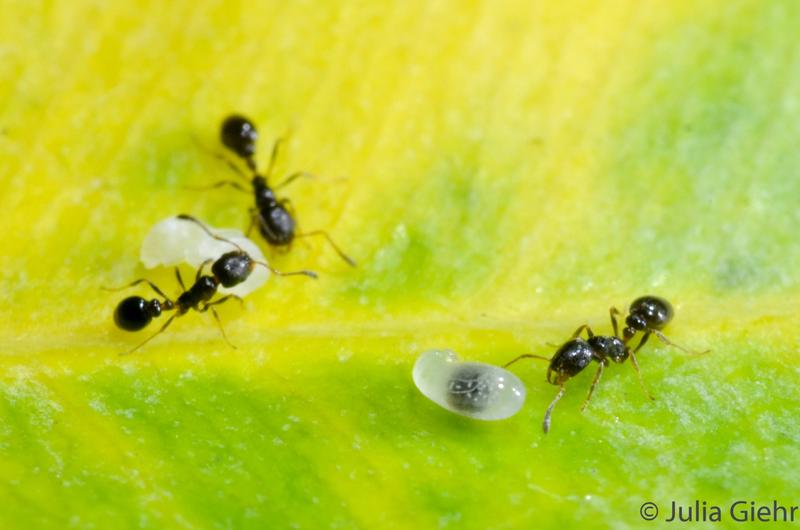Finding the right mating partner is one of the most important tasks in the life of animals. While many plants in this context rely on the activities of pollinators, mate choice in animals typically does not involve such a third party.
This is quite different in the ant Cardiocondyla elegans in southern France: here, workers transport young queens from their own nests to the soil nests of other colonies, where the young queens can mate with unrelated, wingless males. As Mathilde Vidal, Jürgen Heinze, and their colleagues from University of Regensburg (Germany) and Université de Tours (France) report in an article in Communications Biology, the 2-3mm small workers carry young queens piggyback over several meters and drop them into the pinpoint-sized entrance of another colony. Genetic studies showed that this transfer prevents inbreeding. Workers apparently select specific recipient colonies, but how they identify appropriate targets for the queen transfer has not yet been elucidated. Of all the colorful and bizarre variants of sexual selection in animals, the behavior of Cardiocondyla elegans comes closest to matchmaking in humans.
Contact for scientific information:
Prof. Dr. Jürgen Heinze
Institute of Zoology
University of Regensburg
Phone +49 941 943-2475
E-Mail: juergen.heinze@ur.de
Original publication:
Vidal, M., Königseder, F., Giehr, J. et al. Worker ants promote outbreeding by transporting young queens to alien nests. Commun Biol 4, 515 (2021). https://doi.org/10.1038/s42003-021-02016-1




